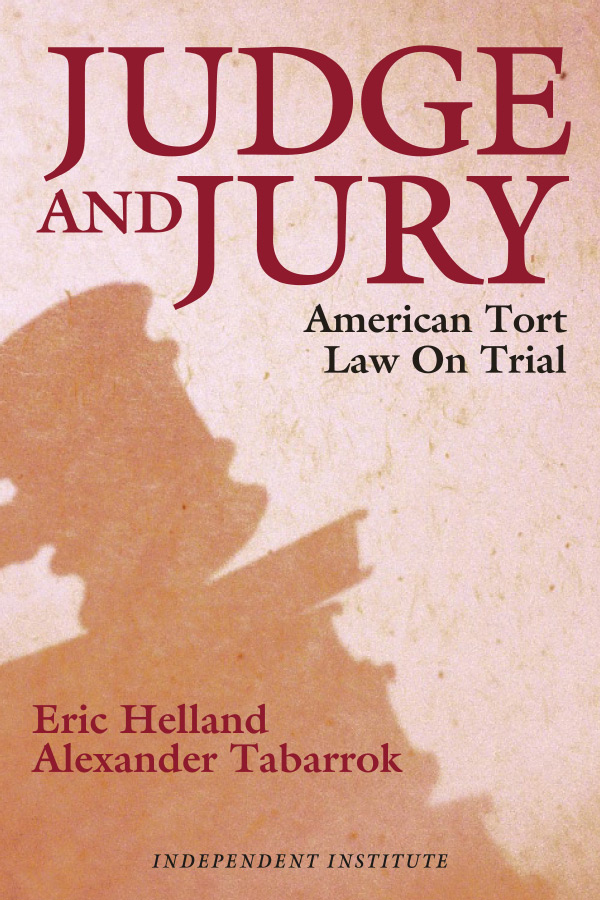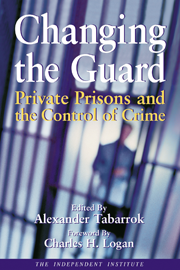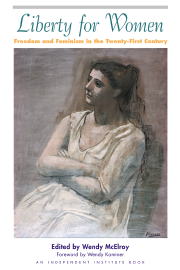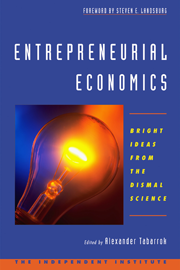Hastings Law School, University of California, San Francisco
September 20, 2001
Federalism is so important to the cause of liberty and to the American constitutional structure—and so little appreciated—that its study should occupy a central place in the education of all Americans, especially students of government and law. Here I shall only summarize the key arguments for federalism. An eclectic and highly incomplete list of readings is recommended at the end of this presentation for further study.
1. Laboratories of Democracy
“It is one of the happy incidents of the federal system,” Justice Louis D. Brandeis wrote in 1932, “that a single courageous state may, if its citizens choose, serve as a laboratory; and try novel social and economic experiments without risk to the rest of the country.” In a decentralized system ideas can be tried at the local level, there learning occurs, ideas are improved and then begin to diffuse throughout the rest of the country. This idea is more than theoretical. Airline deregulation began at the state level and was adopted nationally when it was noticed that in-state trips in large states that had deregulated were much cheaper than trips of the same distance that crossed state lines. Welfare reform and school choice are two other examples of recent policies that began at the state level. The lessons learned need not always be positive lessons. Other states and countries owe California a great debt, for example, for its demonstration of how not to deregulate electricity.
2. Diversity of Preferences
The laboratory of democracy view implicitly assumes there is one best way to do something and that a decentralized trial and error process is a good way to discover what that best way is. If it were not for change, then from this viewpoint all jurisdictions would converge over time on a similar set of policies as they learned from one another what the best policies were. The diversity of preference view says that even in the long run, policies will differ across jurisdictions because people have different preferences. What is best for Rhode Island is not necessarily what is best for California, and what is best for San Jose is not necessarily what is best for San Francisco. By decentralizing power one can better match preferences with policies.
The diversity of preference view implies that the more heterogeneous a society is, the more decentralized should be its institutions. Decentralization, by the way, doesn’t simply mean decentralization to a smaller government unit; it may mean leaving the decision in private hands – leaving a decision to private choice is in effect decentralization to the smallest political unit, the individual. In their classic work The Calculus of Consent Buchanan and Tullock make both the point about heterogeneity and decentralization to the individual when they write that
3. Subsidiarity: Matching Economic and Political Jurisdictions“Many activities that may be quite rationally collectivized in Sweden, a country with a relatively homogeneous population, should be privately organized in India, Switzerland, or the United States (p.116).”
Subsidiarity is a European term that means “higher level governments should not do anything that lower levels government can do as well or better.” More generally, impact jurisdictions should be matched to political jurisdictions. What do I mean? Consider the issue of what level of government is responsible for the financing of fire houses. Suppose that the effective range or impact of the firehouses is 5 km and that the firehouse is located in a jurisdiction of 10 km (see diagram).

If there are more voters in the central jurisdiction, then they can foist some of the taxes for the fire station on taxpayers in the outer jurisdiction. Since the benefits of the firehouse go solely to the central jurisdiction but the costs are spread across both jurisdictions, the central jurisdiction is being subsidized and thus has an incentive to spend more on firehouses than is justified by the actual benefits. This is what we mean by pork barrel legislation. There are 435 districts represented in Congress, for example, so it costs each district approximately 1/435th of the actual cost to build a local project such as the Lawrence Welk museum. Thus, we get too many museums devoted to Lawrence Welk. A great cost to us all.
The other alternative is that the outer jurisdiction contains more voters than the central jurisdiction—thus, seeing no benefits, they have little incentive to impose costs. In this case the central jurisdiction may have too little spent on firehouses.
Note also that the subsidiarity principle also implies that decentralization can go too far. If we split the central district into two, then there could be wasteful duplication of services; two firehouses when one would do. Similarly when dealing with public goods the subsidiarity principle implies that the public goods with the largest extensive range should be supplied by the political jurisdiction with the largest extensive range. National defense is the obvious example. If national defense were left to the states each state would have an incentive to free ride on the provision of defense by the others. If New York pays for a nuclear missile, then why should New Jersey pay for anything at all?
When we think of federalism we naturally think of the federal government and the states, but the principles that motivate federalism apply at all levels, and we should be imaginative in thinking about how political units can be designed to match impact jurisdictions. There is no reason, for example, why the political unit that determines fire expenditures need be the same as the unit that determines water or school expenditures and indeed in the United States in addition to national, state and local governments there are many thousands of special districts that are often functionally organized and that control areas such as water, streets, lighting and so forth.
4. Liberty through Mobility and Competitive FederalismOppression at the federal level is difficult to escape. Oppression by the states can be countered by mobility. The more powers that are devolved to lower levels, the easier it becomes pick and choose policies by moving. Gays may move to cities like San Francisco where they are better tolerated, and indeed if enough of them move they can become a political force. In this respect, the idea is similar to the diversity of preferences notion except there the emphasis was on the idea that federalism allows pre-existing diversities to be recognized. Whereas here the idea is that you can move to a city or town that better reflects your preferences. One sometimes hears, for example, that federalism was more important in the 18th century when the people of Virginia really were quite different than the people of New England. Today, so the argument goes, now that people are much more likely to move from one state to another the differences are less clear and so federalism is less important. While this argument makes some sense from the diversity of preference view, it makes no sense at all from the perspective of mobility because it is mobility that generates differences in preferences and competitive federalism works better the more mobile citizens are.
The mobility argument, however, is about more than preferences, it’s about checking and limiting government power. The idea is not simply that exit allows for islands of liberty but that the threat of exit means that you don’t have to leave to achieve liberty. Knowing that taxpayers will leave if taxes become too high, for example, means that taxes won’t become too high. As Nobel Laureate in economics James Buchanan (1995/1996) put it, in an ideal federalism the “federal government is constitutionally restricted to the exercise of the minimal or protective state functions, while all other functions are carried out by separated state or provincial units. The availability of the exit option, guaranteed by the central government, would effectively place limits on the ability of the state-provincial governments to exploit citizens . . . Federalism serves the dual purpose of allowing the range or scope for central government activity to be curtailed and, at the same time, limiting the potential for citizen exploitation by state-provincial units.”
Nor is it just mobility of people that is important but also mobility of capital. Mobility of labor and capital, together, ensure that governments cannot easily expropriate wealth thereby destroying the prospect of economic growth. In this sense federalism was critical to the rise of the Industrial Revolution in England. England, of course, does not have a written constitution or explicit national and state governments but after the Glorious Revolution the powers of the national government were limited and economic power flowed to local governments. Competition among these local governments gave the nascent industrial revolution breathing room. It’s often the case that technological change disrupts and diminishes the power of old industries and political coalitions and as a result these coalitions try to hold back innovation. It is important, therefore, that there be some way to escape the clutches of powerful coalitions—in England the industrial revolution began not in the long-established cities (because these were dominated by politically powerful groups averse to change) but in the relatively free countryside—had England had a national government capable of controlling economic life, there would have been no escape from the dominant coalitions of the day. Quoting political scientist Barry Weingast (1995), “Federalism thus provided a necessary and decisive political foundation for England’s industrial revolution.”
In many ways, the competitive federalism vision is the closest to that of the Founder’s—because it treats federalism as a way of sustaining liberty just as are the other checks and balances in the U.S. system. In particular, this view of federalism is tied closely to the enumerated powers interpretation of the constitution. Quoting Madison, “The power delegated by the proposed Constitution to the federal government are few and defined. Those which are to remain in the State governments are numerous and indefinite.” The powers of the federal government, in other words, are highly limited by law and where power is less limited, at the state and local levels, limits occur by creation of the exit option.
Note that the purpose of limiting the federal government is not to create state’s rights. Madison mocked this view in Federalist 45 when he wrote that “Was, then, the American Revolution effected, was the American Confederacy formed, was the precious blood of thousands spilt, and the hard-earned substance of millions lavished, not that the people of America should enjoy peace, liberty, and safety, but that the government of the individual States, that particular municipal establishments, might enjoy a certain extent of power, and be arrayed with certain dignities and attributes of sovereignty?” Unfortunately, in the recent federalist cases of the Supreme Court, they have taken precisely the line that federalism is good in certain areas because of a “traditional state concern” and have emphasized state prerogatives and autonomy rather than liberty and citizen choice. The notable exception is Justice Thomas, whose concurrence in the Lopez decision is highly recommended.
Brief History of Federalism
Undoubtedly many of you know the history of federalism in the United States far better than I, especially the legal history so I’m just going to make some very brief remarks. There were some early important battles over federalism, particularly those surrounding the Alien and Sedition acts when the federalists, by which I now mean the party of that name, tried to solidify their political power and silence the opposition by suppressing free speech, throwing newspaper editors in jail, and forcing their political enemies to leave the country. This was a very ugly time in American history when the American revolution appeared to be heading down the same road as the French revolution. I mention this because Jefferson and Madison’s Kentucky and Virginia Resolutions were written in response to the Alien and Sedition Acts and are important documents in the history of federalism, but are unfortunately somewhat neglected today. The revolution of 1800, which brought Jefferson to the presidency, however, essentially cemented the enumerated powers vision of the constitution in practice till at least the early twentieth century. I say in practice because the Civil War obviously destroyed the option of secession and thus had an important institutional impact but in terms of government behavior the post-Civil War era was remarkably like the pre-Civil War era. Things began to change with the progressives in the early twentieth century and the further institutional change of the 17th amendment, which took the election of senators away from the state legislators in favor of direct election, thereby removing a force in favor of decentralization. The first World War brought further centralization and before retrenchment had a time to fully take place we had the Great Depression and the New Deal.
The New Deal effectively ended the enumerated powers vision of the constitution. There is some controversy over how important Roosevelt’s threat to pack the Supreme Court was in effecting this change but regardless, there was a change in constitutional interpretation that was not entirely unprecedented but was still a marked change that effectively ended any constitutional constraints on federal action vis-a-vis federalism. That is, although the Supreme Court still interpreted the Bill of Rights as a limit of federal power, no longer was federalist design of the Constitution thought to limit federal power.
A primary locus for this change was the interpretation of the Constitution’s commerce clause in Article I, section 8. Originally meant to ensure that the states didn’t erect protectionist barriers against one another, thereby destroying the national market, the clause came to be interpreted to mean that Congress could regulate anything that affected interstate business. Since everything can be said to affect interstate business, federalist limits on national power were essentially ended by this interpretation. In one famous case (Wickard v. Filburn 317 U.S. 111, 1942) it was decided that the planting of a crop fell within the commerce power even though the farmer planned to consume the entire crop himself and to not sell or ship any of it to other states. The reasoning here was that by not selling the crop, the farmer was reducing the amount of grain that was sold across state borders and therefore not selling affected interstate commerce. Thus, centralized if you do and centralized if you don’t.
The Constitution is not only a living document, however, it is apparently one that can regrow severed limbs because after sixty years of neglect, the Supreme Court finally rediscovered federalism in 1995. United States v. Lopez arose over the Gun Free School Zones Act of 1990, which criminalized the possession of firearms in school zones. Lopez, a Texas high school student, was convicted of carrying a gun into school. A federal district convicted Lopez but the Fifth Circuit Court of Appeals reversed arguing that the act exceeded the power of Congress to regulate interstate commerce. Of course the Fifth Circuit was correct, the only embarrassment is that it took a divided Supreme Court 5:4 to affirm this decision. Carrying a gun to school has nothing to do with trade, i.e., commerce, let alone with inter-state trade. There are simply no grounds for Federal involvement here. Indeed, crime in general has been federalized to a far greater extent than necessary or proper.
The Lopez decision brought howls of protest because the modern mind is baffled by the idea that the federal government can be prohibited from passing a good law. To many commentators the Lopez decision looked like a trick, a technicality, that the Supreme Court adopted because it wanted guns on school grounds. Of course, nothing of the sort is true. Federalism is no more a technicality than the Bill of Rights; Federalism and the Bill of Rights are in fact twin guarantors of liberty. For real Federalism to have a future, it is this understanding of Federalism as a check and balance alongside the Bill of Rights that must be recaptured.
An eclectic and highly incomplete list of important federalist scholarship:
The Federalist Papers by Hamilton, Jay, Madison, is of course the first source, but don’t forget The Anti-Federalist Papers either.
American Bar Association. The Federalization of Criminal Law. American Bar Association, Criminal Justice Section. Wonderful statement decrying the federalization of criminal law and useful statistics on the explosion of federal crimes; chaired by Edwin Meese.
Berger, Raoul. Federalism: The Founders’ Design. Norman: University of Oklahoma Press, 1987. Great history of the founder’s thoughts on federalism but without much theory as to why we should care. Usefully supplemented by McConnell’s review.
Buchanan, James M. “Federalism and Individual Sovereignty.” Cato Journal 15, no. 2-3 (1995/1996): 259-68. Short statement of the competitive federalism ideal.
Buchanan, James M., and Gordon Tullock. The Calculus of Consent Ann Arbor: University of Michigan Press, 1962. Classic work beginning the modern economic theory of constitutions.
Epstein, Richard A. “The Proper Scope of the Commerce Power.” Virginia Law Review 73 (1987): 1387-1455. Important defense of pre-New Deal jurisprudence on the commerce clause.
Greve, Michael S. Real Federalism. Washington, D.C.: AEI Press, 1999. An overview of recent federalist court cases and discussion of the political prospects for federalism.
Higgs, Robert. Crisis and Leviathan: Critical Episodes in the Growth of American Government. New York: Oxford University Press, 1987. Good material in chapter 8 on the Great Depression and the New Deal.
McConnell, Michael W. “Review of Federalism: Evaluating the Founders’ Design.” University of Chicago Law Review 54 (1987): 1484-1512. Important review of Berger’s Federalism explaining why federalism is not only what the founder’s designed but also desirable.
Romano, Roberta. “Empowering investors: A market approach to securities regulation.” Yale Law Journal 107, no. 8 (1998): 2359-2430. A brilliant and convincing consequentialist argument for competitive federalism in the field of securities regulation. Can be applied to other areas.
Van Alstyne, William. “Federalism, Congress, The States and the Tenth Amendment: Adrift in the Cellophane Sea.” Duke Law Journal 1987 (1987): 769-99. Demonstrates the poverty of the current reading of the commerce clause through examination of a hypothetical act of Congress regulating marriage that might pass constitutional muster under the current reading even though it should clearly be rejected.
Weingast, Barry R. “The economic role of political institutions: Market-preserving federalism and economic development.” Journal of Law, Economics, and Organization 11, no. 1 (1995): 1-31. Recent statement of the importance of federalism in providing the political foundations for economic growth.













